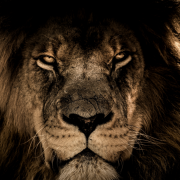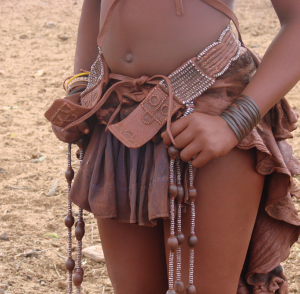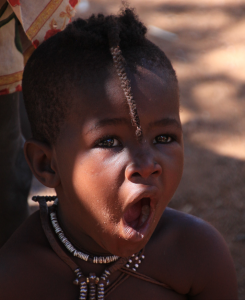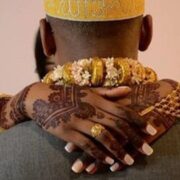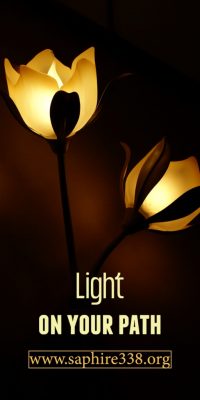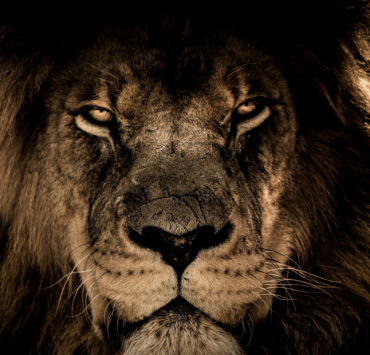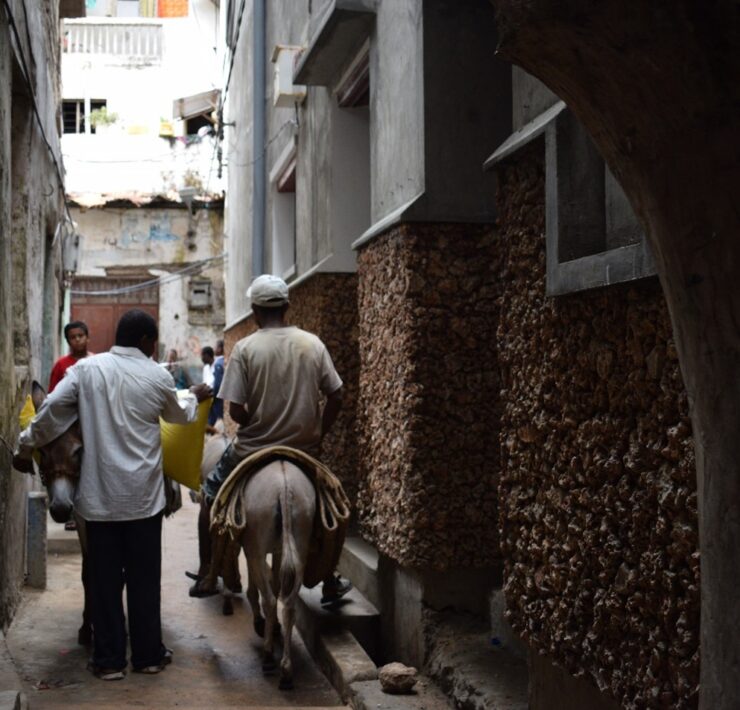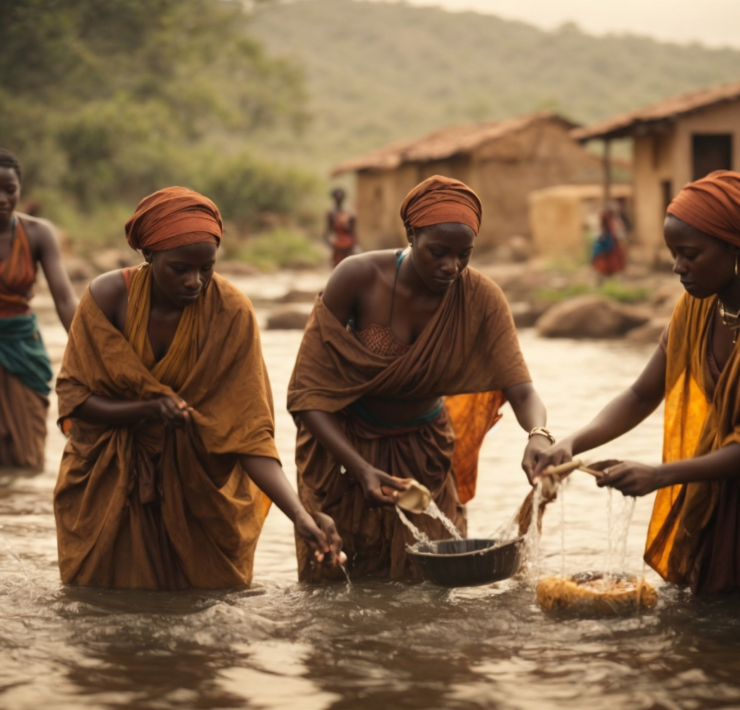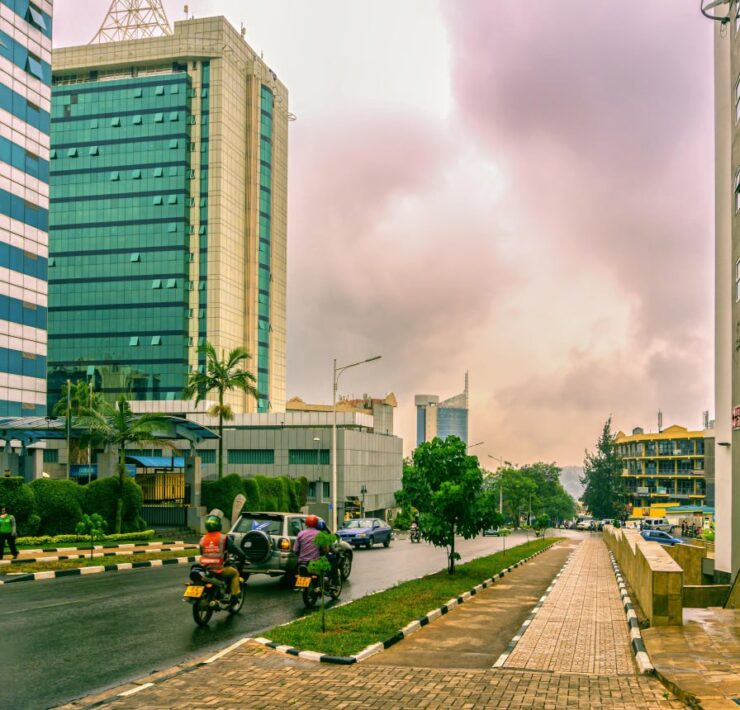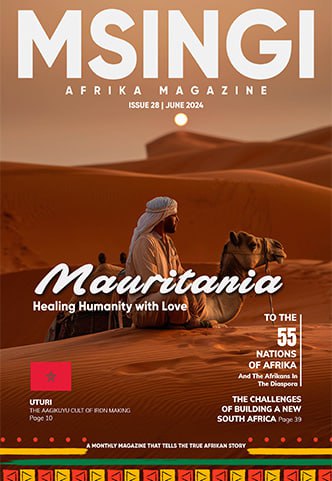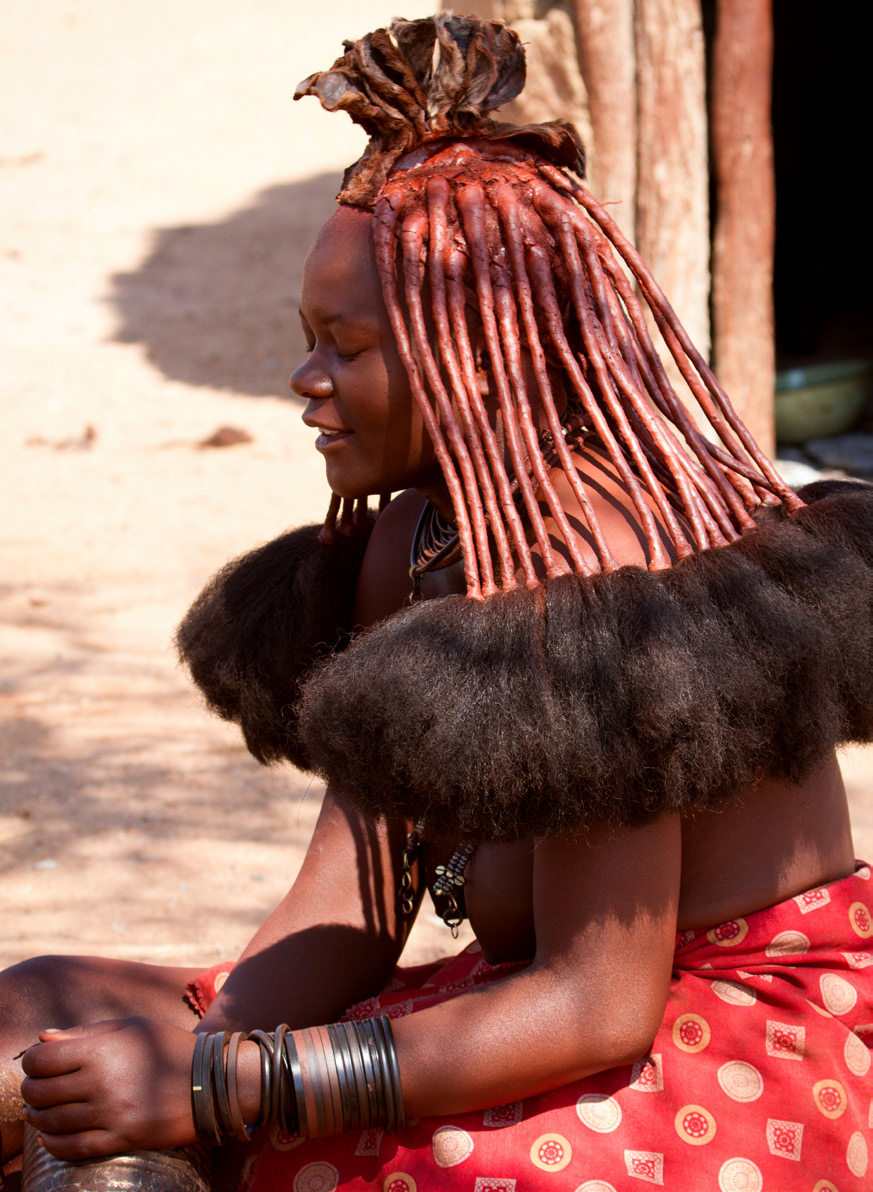
Passionate about getting God's message concerning Afrika and the end…
Read Next
THE HIMBA TRIBE OF NAMIBIA
It was quite a coincidence to discover that the Afrikan tribe we wanted to feature this time, was actually one of those that inspired the costume for the movie The Black Panther. We only realized this when we started our hunt for photos and saw the distinct hairstyle of one of the women.
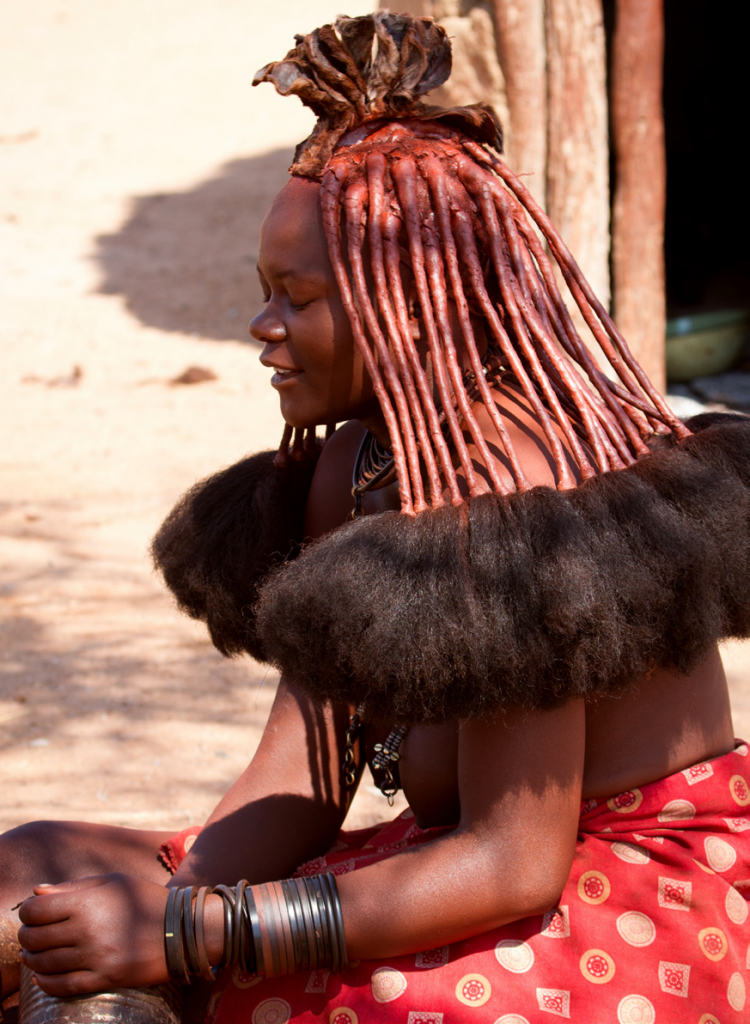 PIN IT
PIN ITThe Himba (singular: Omuhimba, plural: Ovahimba) are an ancient tribe from Namibia. They are said to be a friendly people, living a semi-nomadic lifestyle and are closely related to the Herero, but became a distinct people when they moved west to discover new lands and room for themselves and their cattle.
Pastoral lifestyle
They live in the Kunene and Omusati regions of Northern Namibia and breed cattle and goats – and like most of the pastoral Afrikan tribes, their cattle are symbolic of their social status; the larger the numbers, the greater the status. Interestingly, though, they may not be so eager to divulge the true sizes of their herds in order to discourage theft. They also grow maize and millet for consumption, with their diets complemented by eggs, wild herbs and honey.
The social status of the Himba
The Himba people speak the Otjihimba language, and their population numbers about 20,000 to 50,000 people. Their culture centers strongly around the ‘man comes first’ tradition, with the woman having little or no opinion in decision making; submission to her husband’s demands always comes first.
Himba women tend to perform more labor-intensive work than men do, such as carrying water to the village, building homes and milking cows, while the men go hunting, sometimes leaving for long periods of time. Men also handle the political tasks and legal trials.
As one of their cultural practices, it is said that “When a visitor comes knocking, a man shows his approval and pleasure of seeing his guest by giving him the Okujepisa Omukazendu treatment — the wife is given to his guest to spend the night while the husband sleeps in another room. In a case where there is no available room, her husband will sleep outside.” This, apparently, is aimed at reducing jealousy and fostering relationships.
“NO BATHING” Culture
The Himba people live in arid and mountainous climes, with often harsh climatic conditions as this is one of the most extreme environments on earth. The harsh desert climate and the unavailability of potable water prevent them from having a ‘normal’ water bath, the women, at least. The men bath with water, but the women partake in a daily smoke bath in order to maintain their hygiene. During the smoke bathing process ‘they will put some smoldering charcoal into a little bowl of herbs(mostly leaves and little branches of Commiphora trees) and wait for the smoke to ascend. Thereafter, they will bow over the smoking bowl and due to the heat, they will start perspiring. For a full body wash, they cover themselves with a blanket so that the smoke gets trapped underneath the fabric.
They also apply a red ochre – butterfat mixture on their skin and hair known as otjize. This protects their skin from the harsh sun as well as mosquitoes and gives them a beautiful appearance. It also complements their little to no dressing, as both men and women wear limited clothing – a loin cloth or a goat-skin skirt. Himba jewelry is intricate in design and made from iron or shell.’
Religion and beliefs
The Himba worship their ancestors and the god Mukuru. Often, because Mukuru is busy in a distant realm, the ancestors act as Mukuru’s representatives.
Their homes surround an okuruwo (ancestral or sacred fire) and their livestock, both of which are closely tied to their belief in ancestor worship. Each family has its own ancestral fire, which is kept by the fire-keeper, who attends to the ancestral fire every seven to eight days in order to communicate with Mukuru and the ancestors on behalf of the family. Himba houses are usually cone-shaped and made from palm leaves, mud and cow dung, with families moving from one dwelling to another throughout the year in search of good grazing pastures for their animals.
 PIN IT
PIN ITVillages are designed as a circular cluster of huts that are set around the okuruwo, which is believed to represent the protection of their ancestors. This fire is kept continuously lit to bridge the divide between the living and the dead, with all doorways (except for that of the chief’s) facing away from its glow. A livestock kraal is located adjacent to the huts and holds cattle that are considered sacred to the Himba, representing the tribe’s ancestors and playing an important role in traditional rituals.
Hairstyles of the Himba
Himba hairstyles are intricate and ornate and used to indicate age and social status. A young girl typically has two plaits (ozondato) of braided hair, the form being determined by the oruzo membership (patrilineal descent group). Twin girls, however, just wear one plait each.
Just before puberty, the girls wear long plaitlets worn loosely around the face as a kind of a veil – it can take on various forms and sometimes wigs are worn over it. They ‘veiled’ style is meant to indicate that the girl is not ready for marriage.
When the girls have completed their puberty ceremony, the so-called ekori festival takes place and she receives the ekori headdress made from tanned sheep’s or goatskin with three leaf-shaped points, often decorated with iron beads. The hair is now away from the face, indicating preparedness for marriage.
When she has been married for about a year or has had a child, the ekori head-dress is replaced by the erembe headdress made from the skin of a goat’s head and fastened under the hair at the back of the head by two thongs. From then on the ekori is worn only during ceremonial occasions. Himba culture does not consider one to be a woman until she has had a baby.
Himba males also wear different hairstyles, such as the single plait, the ondato, worn by young boys down the back of the head, two plaits, ozondato, worn by Himba men of marriageable age and the ombwiya headdress, a scarf made from fabric covering the hair and decorated with an ornamental band.
Once the married Himba males don their headdress, they do not take it off again. Having to depend on a special device to scratch their scalp, beneath the headdress when need arises. A widowed Himba male will remove his headdress.
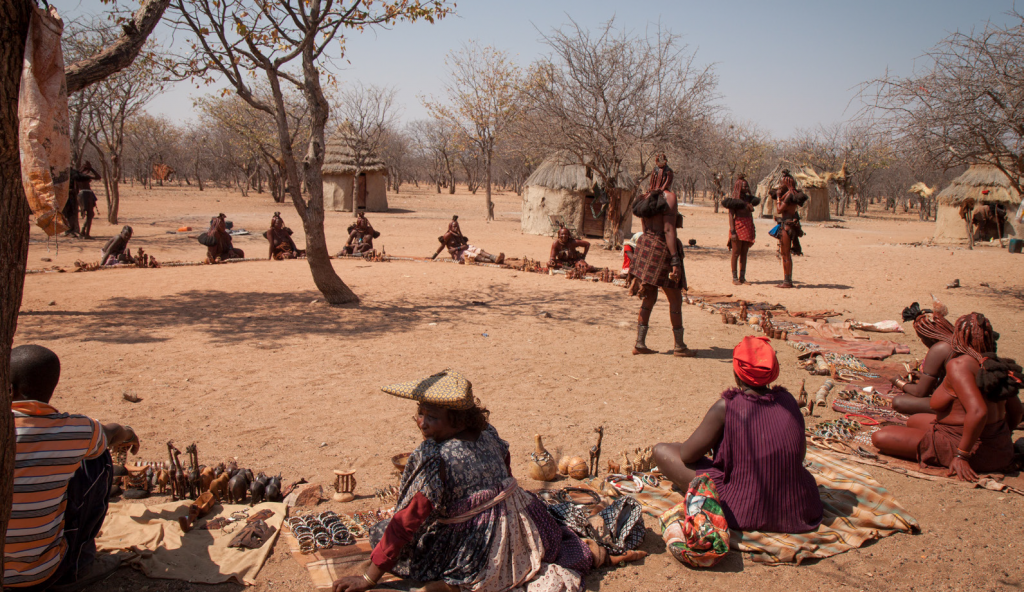 PIN IT
PIN ITBoth men and women wear large numbers of necklaces, arm bracelets, sometimes almost like sleeves, made from ostrich eggshell beads, grass, cloth and copper and weighing as much as 40 kg, as well as bracelets around the legs. Iron oxide powder with its shiny effect is worn as a cosmetic, much like western glitter.
The Himba people are one of the warmest tribes in Afrika and are courteous to strangers and visitors alike. They however frown at anything that will threaten their cultural values and traditions.
NOTE: How beautiful is the mind of God to have made various tribes and tongues for one eternal purpose, that is, for all to worship Him. The story of redemption is tied to this eternal worship. Rev 5: 9-10 “And they sang a new song, saying: “You are worthy to take the scroll and to open its seals, because you were slain, and with your blood you purchased for God persons from every tribe and language and people and nation. You have made them to be a kingdom and priests to serve our God, and they will reign on the earth.”
Image sources: Joanna Goldby via Flickr and Pixabay
Subscribe now for updates from Msingi Afrika Magazine!
Receive notifications about new issues, products and offers.
What's Your Reaction?
 PIN IT
PIN ITPassionate about getting God's message concerning Afrika and the end times to the world, in order to heal, restore and rebirth Afrika to her true purpose and destiny in God.








